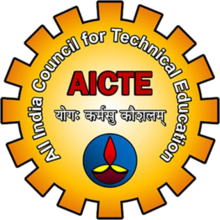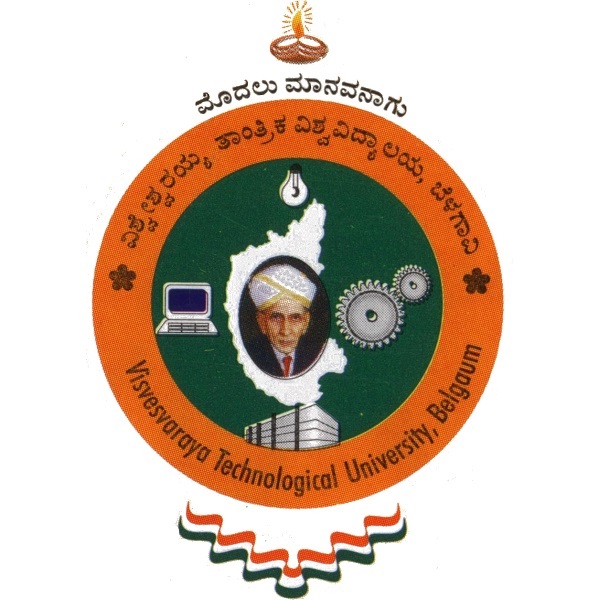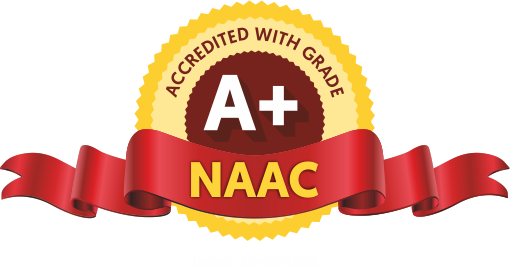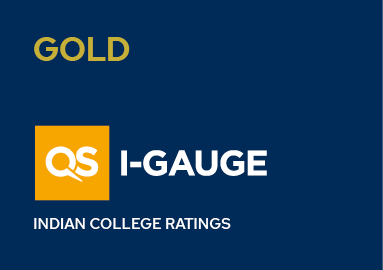Intellectual Property Rights (IPR) Cell
Vision
Encourage Intelligent Innovation and protection of the new creations to drive sustained and inclusive economic growth.
Mission
- To create awareness and provide guidance to faculty, students and research scholars on the practices and the rules of institute regarding intellectual property rights and obligations within the frame work of the IPR policy of the institute.
- To safeguard the interests of inventor(s) in creation and commercialization of intellectual property with legal support wherever necessary.
- To promote an IPR culture compatible with the educational ethos of the institute.
| Sl No. | Patent Application Number | Patent Grant Number | Inventors Name | Department(s) | Title of the Patent | Patent Filed Date | Patent Granted Date | Jurisdiction |
|---|---|---|---|---|---|---|---|---|
| 1 | 2021103367 | 2021103367 | Dr.Gowrishankar S., Ms.Veena A., Mr.Srinivasa A. H., Dr.Asha | Computer Science and Engineering | A Big Data Analytics System for Performing Real-Time Analysis for the Wellness of a User | 15-06-2021 | 16-03-2022 | Australia |
| 2 | 2021103285 | 2021103285 | Dr.Gowrishankar S., Ms.Veena A., Dr.Asha, Mr.Srinivasa A. H., Dr.Siddaraju, and Ms.Nirmala L. | Computer Science & Engineering,Electronics & Instrumentation Engineering | Unmanned Aerial Vehicle Based Medicinal Plant Classification System | 10-06-2021 | 23-03-2022 | Australia |
| 3 | 2021106278 | 2021106278 | Ms.Veena A., Dr.Gowrishankar S. | Computer Science & Engineering | Automated Anterior Cruciate Ligament (ACL) Tear Detection System | 21-08-2021 | 17-11-2021 | Australia |
| 4 | 2021105629 | 2021105629 | Ms.Veena A., Dr.Gowrishankar S., Mr.Srinivasa A. H., Dr.Asha Ramesh, Ms.S.Pushpalatha, Ms.Vidyarani H. J., Ms.Vidya H. A., Mr.Basavesh D. | Computer Science & Engineering,Information Science & Engineering | System and Method for Monitoring, Detecting and Counting Fruits in a Field | 17-08-2021 | 10-11-2021 | Australia |
| 5 | 2021103326 | 2021103326 | Mr.Srinivasa A. H., Dr.Siddaraju, Dr.Asha, Dr.Gowrishankar S., Dr.Prabha R., Mr.Praveena M. V., Ms.Veena A. | Computer Science & Engineering | Deep Learning Based Road Condition Monitoring System | 13-06-2021 | 21-07-2021 | Australia |
| 6 | 2021100959 | 2021100959 | Dr.Gowrishankar S. | Computer Science & Engineering | Security Protocol to Prevent Attacks from Programmable Matter in IoT Networks | 21-02-2021 | 14-04-2021 | Australia |
| 7 | 202141015896 | 389581 | Dr.Siddaraju, Dr.Gowrishankar S. and Mr.Srinivasa A. H. | Computer Science & Engineering | A Floating Platform System for Remotely Monitoring and Analyzing the Quality of Water Bodies | 05-04-2021 | 17-02-2022 | India |
| 8 | 2021101315 | 2021101315 | Harsha R | Electronics & Communication Engineering | Marco model analysis for health monitoring of Covid-19 patients | 01-01-2017 | 01-01-2018 | Australia |
| 9 | 2021102604 | 2021102604 | Kavithadevi C S ,Dr.J.S.Baligar,Dr Umadevi H U | Electronics & Communication Engineering | Reconfigurable compact microstrip filters | 06-05-2021 | 16-06-2021 | Australia |
| 10 | 2020102066 | 2020102066 | Dr. Ramesh S, Dr. Mahlinga V Mandi ,Dr. Shivputra | Electronics & Communication Engineering | DWT Based Feature Extraction for Iris Recognition | 25-11-2020 | 25-11-2020 | Australia |
| 11 | 2020101562 | 2020101562 | Harsha R | Electronics & Communication Engineering | An artificial intelligence and IOT based system for monitoring and detection of electricity theft | 29-07-2020 | 29-08-2020 | Australia |
| 12 | 202141018627 A | Dr. Pavan Tejasvi .T,Dr. Ranjith V,Dr Bhanupratap R | Mechanical Engineering | DESIGN AND DEVELOPMENT OF SOLAR POWER BASED ELECTRIC VEHICLE CHARGING BOOTHS | 22-04-2021 | 30-04-2021 | India | |
| 13 | 202141024010 | Dr. Chandrashekar K.,Dr. Shivappa H.A, Dr. Pavithra G, Venkatesh R, | Mechanical Engineering | “Artificial intelligence based automated material management system”, | 29-05-2021 | 18-06-2021 | India | |
| 14 | 15/235,684 | 10256007 | S.Vasudevamurthy and others | Electrical & Electronics Engineering | Process to extract liquid dielectric coolant from the sesame oil | 12-08-16 | 09-04-2019 | USA |
| 15 | 15/236,082 | 9994753 | S.Vasudevamurthy and others | Electrical & Electronics Engineering | Process to extract liquid dielectric coolant from the rice bran oil | 12-08-16 | 12-06-2018 | USA |
| 16 | 4250/CHE/2015 | 351971 | S.Vasudevamurthy and others | Electrical & Electronics Engineering | Process to extract liquid dielectric coolant from the sesame oil | 14-08-2015 | 24-11-2020 | India |
| 17 | 4251/CHE/2015 | 352034 | S.Vasudevamurthy and others | Electrical & Electronics Engineering | Process to extract liquid dielectric coolant from the rice bran oil | 14-08-2015 | 24-11-2020 | India |
| Sl No. | Patent Application Number | Inventors Name | Department(s) | Title of the Patent | Patent Filed Date | Patent Published Date | Jurisdiction |
|---|---|---|---|---|---|---|---|
| 1 | 201841015587A | Dr.Shivaputra | Department(s) Electronics & Communication Engineering | Planer inverted modified “Q” shaped antenna for betterment of bandwidth | 25-04-2018 | 04-05-2018 | India |
| 2 | 201841021711A | Dr.Shivaputra | Department(s) Electronics & Communication Engineering | Multi band Micro strip patch antenna | 11-06-2018 | 22-06-2018 | India |
| 3 | 202041009243 | Dr. M V Mandi Paritosh Tripati Ramya A S | Electronics & Communication Engineering | A portable device to measure Blood Pressure, Heart Rate, Body Temperature and Expiratory Flow rate. | 04-03-2020 | 10-09-2021 | India |
| 4 | 202141003615 A | Meenakshi L Rathod | Electronics & Communication Engineering | Design And Development Of Smart Security And Surveillance System | 27-01-2021 | 26-02-2021 | India |
| 5 | 202141000118 A | Dr. Shivaputra | Electronics & Communication Engineering | Development of IoT based underground wire fault detection system | 02-01-2021 | 06-02-2021 | India |
| 6 | 201841014694 | Dr. B. Sivakumar, Praveen K B | Electronics & Telecommunication Engineering | An apparatus for reducing linear microstrip line bend loss using rectangular patch antenna | 18-04-2018 | 27-04-2018 | India |
| 7 | 202141039098 | Dr. B. Sivakumar, Praveen K B | Electronics & Telecommunication Engineering | Artificial intelligence based automated data security and assistance system | 29-08-2021 | 27-04-2018 | India |
| 8 | 201841022906 A | Dr. D. K. Ravish | Medical Electronics Engineering | Electroencephalogram Seizure detector and predictor | 19-06-2018 | 29-06-2018 | India |
| 9 | 313045-001 | Dr. K J Shanthi | Medical Electronics Engineering | Vein Detector | 03-12-2018 | 11-11-2019 | India |
| 10 | 201941023281 | Dr. K J Shanthi | Medical Electronics Engineering | A digital dental tape for measuring the occlusal vertical definition of patient face | 12-06-2019 | 18-12-2020 | India |
| 11 | 202041029857 | Dr. D. K. Ravish | Medical Electronics Engineering | Weighted Fundus Photography Features for Automatic Early Detection of Glacouma Using Damage Likelyhood Scale | 14-07-2020 | 31-07-2020 | India |
| 12 | 201641028197 | Dr.Siddaraju, Dr.Gowrishankar S.,Ms.Damanpreet Kaur | Computer Science & Engineering | A System and Method for Providing Home Based Healthcare Recommendations | 19-08-2016 | 23-02-2018 | India |
| 13 | 202041053139 | Tejaswini K | Computer Science & Engineering | Machine Learning Based Intelligence Automatic water tank cleaning Robot for home | 07-12-2020 | 18-12-2020 | India |
| 14 | 202041034749 | Ravikumar J | Computer Science & Engineering | Air quality monitoring and controlling device using internet of things (iot) | 13-08-2020 | 04-09-2020 | India |
| 15 | 202041047576 | Vinutha H | Computer Science & Engineering | Trespassers detection system for Agriculture fields using Artificial Intelligence and Methods | 30-10-2020 | 06-11-2020 | India |
| 16 | 202141032904 | Dharsan. K Mr. T Srinath Mr. Tejesh S Dr. Rajesh M | Mechanical Engineering | Backlight prevention in photography and videography without using post-processing compensation techniques | 22-07-2021 | 30-07-2021 | India |
| 17 | 201741027213 | M.V.Vijayakumar | Information Science & Engineering | A system and method to provide Effcient recovery of data through an external USB | 01-08-2017 | 08-02-2019 | India |
| 18 | 202041050523 | Dr B S Shylaja | Information Science & Engineering | A Single Assistive device for deaf dumb and blind | 21-11-2020 | India | |
| 19 | 202041047145 | Dr B S Shylaja | Information Science & Engineering | IOT based Intelligent system thereof | 29-10-2020 | India | |
| 20 | 202111021980 A | Dr.G.V.Jayaramaiah | Electrical & Electronics Engineering | System and method for vibration suppression of different types of structures using multiple sensing techniques using control algorithms | 16-05-2021 | 01-01-2018 |
Objectives
The major objectives of the IPR policy of Dr.AIT are:
- To provide a good working environment to the faculty, students and research scholars of Dr.AIT for creation, protection, and commercialization of intellectual property and to stimulate innovation.
- To encourage research and a spirit of inquiry, thereby generating new knowledge.
- To facilitate the transfer of knowledge and technology to intending users to promote utilization of such resources for benefit of the society.
- To provide for an equitable distribution of economic gains resulting from new intellectual property among the inventor(s), department and the institute.
- To safeguard, review and manage the intellectual property so that it may receive adequate and appropriate legal protection against unauthorized use.
- To encourage students at all levels to develop patentable technologies and to provide financial assistance from Dr.AIT to the extent possible.
- To create awareness on IPR through conducting seminars, conferences, invited talks and lectures, and training programs among the academic community.
POLICY
Introduction
This document sets out the Dr. Ambedkar Institute of Technology herein after referred to as “Dr.AIT” policy in respect of:
- the ownership of Intellectual Property created by its employees, students, academics (off roll) and research scholars
- the protection of Intellectual Property owned by Dr.AIT
- the commercial exploitation of Intellectual Property owned by Dr.AIT
- the distribution of revenue arising from the commercial exploitation of Intellectual Property
- the implementation of this Policy
Definition of Intellectual Property
- Intellectual Property (IP) is the term used to describe the product(s) of any creative endeavor – artistic, literary or scientific - that can be protected under legislation.
- In the context of this policy, IP thus refers to all matter capable of being protected by patents, copyright, designs, database rights, topography rights, trade marks, plant breeders rights, know how and all other intellectual or industrial property rights, in each case whether registered or unregistered and including applications or rights to apply for them together with all extensions, divisional, continuations, continuations in part and renewals of them, and in each and every case all rights or forms of protection having equivalent or similar effect anywhere in the world. It also refers, however, to other intellectual assets such as inventions and discoveries and any other product or attribute of intellectual or academic activity (whether or not formal property rights subsist or are capable of subsisting therein) such as (but without limitation) know-how, knowledge and expertise, skills, techniques, and the results of experiments, tests, or calculations.
-
Principles of the Policy
- The majority of its resources and its activities are funded by public money. Dr.AIT therefore has a duty to ensure that those resources are accounted for and used appropriately.
- To this end the general principles underlying this policy are:
- Dr.AIT owns the IP created by its employees, except to the extent this policy provides otherwise.
- Dr.AIT must obtain good value for any investment it makes in creating IP (in terms of its funds, facilities, staff or other resources) that is commercially exploited. Where, however, the use of those resources is insignificant in the creation of IP then Dr.AIT may waive its ownership rights.
- Creators of IP that is commercially exploited and that generates income should receive a fair share of that benefit, as should the Institute and the relevant Department(s).
- In respect of IP which Dr.AIT determines not to exploit, commercially or otherwise, Dr.AIT should have the right to use that IP for its own but should not unreasonably refuse to license or assign the IP to the Creator.
-
Ownership of IP
Employees of Dr. Ambedkar Institute of Technology
- Dr.AIT claims ownership, unless agreed otherwise, of all IP arising:
- from work undertaken by employees of Dr.AIT in the course of their normal duties of employment.
- from work undertaken by employees of Dr.AIT outside of their normal duties of employment that makes more than incidental use of the Dr.AIT’s resources.
- from work developed under a contract between employees and Dr.AIT.
- from work developed in the course of research or other activities sponsored by Dr.AIT.
- from work developed in the course of research or other activities sponsored by an external body, subject to any agreement with that external body.
- Dr.AIT recognizes the following exceptions to its ownership of IP which apply unless otherwise agreed:
- any material produced as an aid to teaching
- conference and seminar papers
- publications such as books, book chapters, journal articles
- With regard to these exceptions, Dr.AIT shall be granted an unconditional, perpetual and irrevocable right to copy, use and modify these materials for all purposes connected with Dr.AIT. The rights relating to 4.2.1 shall be exclusive during the term of employment and non-exclusive thereafter. The rights related to 4.2.2-3 shall be non-exclusive.
- With respect to the production of items specified in section 4.2, where Dr.AIT has invested support in terms of financial resource, materials or time to the member of staff, there will be an apportionment of any royalties or revenues which accrue from the commercialization according to the proportions identified in section 7.3 of this policy. An example would be the production of a textbook or set of teaching materials produced by an individual or group of staff who had been supported by Dr.AIT in the production or commercialization through a period of project leave, investment in the commercialization or by providing a period of lighter duties.
- Students generating IP in the course of their academic studies and/or research own that IP in their own right.
- Exceptions to this include (but are not limited to):
- A sponsored studentship where the sponsor has a claim on IP arising from the terms of the sponsorship.
- Where the student is part of a research team where the sponsor of that research owns any IP arising from that research.
- Where a specific agreement has been made between the student and Dr.AIT to the contrary (e.g., the student has used Dr.AIT facilities and resources through an agreement with Dr.AIT that it shall own all or part of the resulting IP)
- Where the student generates IP resulting from collaboration or work with an employee of Dr.AIT working in the course of his or her employment.
- Where a Dr.AIT employee is concurrently registered as a student, the employee status takes precedence for the purposes of this Policy.
- Screening of all requests for patent applications shall be done by the respective department(s) of the Inventor(s) in coordination with the IPR Cell.
- An invention will be patented only if it has commercial value and viable for production and marketing.
- Academics or researchers who have an honorary association with Dr.AIT but are not employed by Dr.AIT are generally required to transfer any IP they create in the course of their honorary activities to Dr.AIT, subject to the terms and conditions of their honorary contract.
- The Inventor(s) of know-how / designs / instruments / devices / processes / specimens and other such IPs who want to get patents for the patentable IPs and / or transfer thereof for commercial exploitation will be required to make an application for the purpose to the Principal, Dr.AIT through IPR Cell Coordinator.
- The institute may consider requests for registration of Patents in foreign countries based on the merit of the IP. If the institute decides not to file such a patent in any foreign country, the institute shall assign rights of IP in that country to the Inventor(s) for the purpose of such protection, if the Inventor(s) so desires.
- It is the responsibility of each individual who is subject to this Policy to ensure that IP arrangements with third parties drawn up in the course of, for example, collaborative research activity, contract research or consultancy work, do not conflict with their obligations to Dr.AIT, including the Dr.AIT’s rights of IP ownership under this Policy.
- In the course of consultancy agreements and sub-contracting arrangements with other institutions, it must be ensured that the Dr.AIT’s rights are appropriately protected; especially where there is a strong possibility that IP may be created during the course of the work.
- For further advice on this matter please contact either DEAN (III)’s office or DEAN (R&D)’s office.
Evaluation of IPR
Academics and Research Scholars
Filing of application in India
Filing of application in Foreign Countries
Working with third parties
- Dr.AIT claims ownership, unless agreed otherwise, of all IP arising:
-
The Protection of IP
- Employees must disclose to Dr.AIT any IP that they create of which Dr.AIT is the Owner (under the term set out in this Policy at 4.1-2). In the first instance, employees should contact either DEAN (III)’s office or DEAN (R&D)’s office.
- Employees must keep confidential at all times and must not publish or disclose any such IP, except as expressly permitted by Dr.AIT under this Policy or otherwise in writing.
- It is the duty of the Employees to ensure that this IP is appropriately protected, although they should contact either DEAN (III)’s office or DEAN (R&D)’s office for advice and guidance in establishing this protection.
- Some Intellectual Property Rights (IPR) arise automatically, i.e., Copyright and Unregistered Design Rights. Other forms of IPR, e.g., patents, trademarks, registered design rights, database rights, must be applied for. It is the responsibility of employees (notwithstanding the termination of their employment):
- to apply for and obtain in the sole name of Dr.AIT, (unless otherwise directed) a patent, trademark, registered design or other protection of any nature whatsoever, as appropriate to the IP, in any country throughout the world and, when so obtained or vested, to renew and maintain this protection.
- to resist any objection or opposition to obtaining, and any petitions or applications for revocation of, any such patent, trademark, registered design or other protection;
- to bring any proceedings for infringement of any such patent, trademark, registered design or other protection;
- Dr.AIT undertakes to indemnify its employees in respect of all costs, claims and damages incurred, in connection with the discharge by its employees of any.
- Where IP can only be protected by a Confidentiality Agreement since no formal IPR are capable of subsisting then employees should consult either DEAN (III)’s office or DEAN (R&D)’s office.
-
Commercial Exploitation of IP
- Exploitation of IP is taken to mean any sale, transfer, assignment or licensing of the IP and/or the supply, sale or licensing of goods or services involving the use of the IP.
- Unless otherwise authorized, Dr.AIT shall determine if and how any IP that it owns shall be exploited, commercially or otherwise.
- In the first instance, the creator(s) should contact either DEAN (III)’s office or DEAN (R&D)’s office to discuss the issue of exploitation.
- If Dr.AIT decides that it does not wish to exploit any IP of which it has ownership, Dr.AIT will normally license or assign the IP to the creators where it can be shown to its reasonable satisfaction that assigning ownership or licensing will be on terms which are consistent with the Dr.AIT’s obligations for the use of public funds.
- If the IP is commercialized by the creator, Dr.AIT will be entitled to a share of revenue in accordance with guidelines set out in sections 7.1-3 of this Policy.
-
Distribution of Revenue Arising from the Commercial Exploitation of IP
- Revenue here is taken to mean any capital and/or income received or receivable by the Dr.AIT in respect of the exploitation of its IP.
- The following costs (including GST, where recoverable) will be recouped from the revenue received in relation to the IP:
- costs associated with protection of the IP
- costs of defense of the IP
- costs of marketing the IP
- costs of any legal agreements associated with the IP
- costs of any development work that is not externally funded or recoverable
- any other costs necessary for the successful commercialization of the IP
- overheads on all of the above
- the risk cost of any capital sums applied at the appropriate market rates
- any other expenses directly related to the obtaining or exploitation of the IP any payment due under a revenue sharing agreement to a third party involved in the research leading to the development of the IP
- Any remaining revenue shall be apportioned as follows:
- For IPR solely owned by Dr.AIT, half of the revenues shall be paid directly to the Inventor(s) and another half to Dr.AIT.
- For IPR owned between Dr.AIT and organization/agencies, Revenue sharing will be as per the terms in the rules of sponsoring agency/Agreements. If no such terms are there then Policy 7.3.1 will be followed.
-
Renewal of Patents
- The institution will pay the Patent Fees for the first five years in all cases where patent is taken by the institution.
- If it is a joint patent with a sponsoring agency, the patenting costs may be equally shared.
- If the patent has been commercially exploited within the first five years, the institution shall pay the Patent Fees for the remaining period of the life of the patent.
- If the patent has not been commercially exploited within the first five years, the institute and the Inventor(s) shall share the subsequent installments of renewal fees on 50.50 basis.
- If the Inventor(s) does not show interest in such renewals, the institute can either continue the patent by paying the fees for its full term or withdraw application for the patent protection at its discretion.
-
Implementation of this Policy
- The responsibility for the implementation and monitoring of this Policy shall lie with the Principal, Dr.AIT and DEAN (III)’s office who may delegate that responsibility to another person.
-
Dispute Resolution
- An IPR Dispute Resolution Committee (IPR-DRC) committee shall be formed to address the concerns of the aggrieved party. In case of any disputes between the Institute and the inventors regarding the implementation of the IP policy and guidelines, the aggrieved party may appeal to the IPR Dispute Resolution Committee (IPR-DRC). If the inventor is dissatisfied with the decision of IPR-DRC, then a second appeal can be submitted to the Principal, Dr.AIT. The Principal’s decision in this regard would be final and binding.
-
Jurisdiction
- All agreements to be signed by Dr.AIT will have the jurisdiction of the court in Bengaluru, Karnataka and shall be governed by appropriate laws of India. Further, Dr.AIT reserves the right to amend the IPR Policy as and when such a need arises/deemed fit and it abides all the stake holders.
For any queries, please contact
Dr.B S Shylaja,
DEAN (Industry-Institute-Interaction), Professor, Dept. of Information Science & Engineering, Dr. Ambedkar Institute of Technology, Bengaluru – 560056, Karnataka, India.
Faculty and Students who are willing to apply for patents should download the document from the below link.
Download Form







